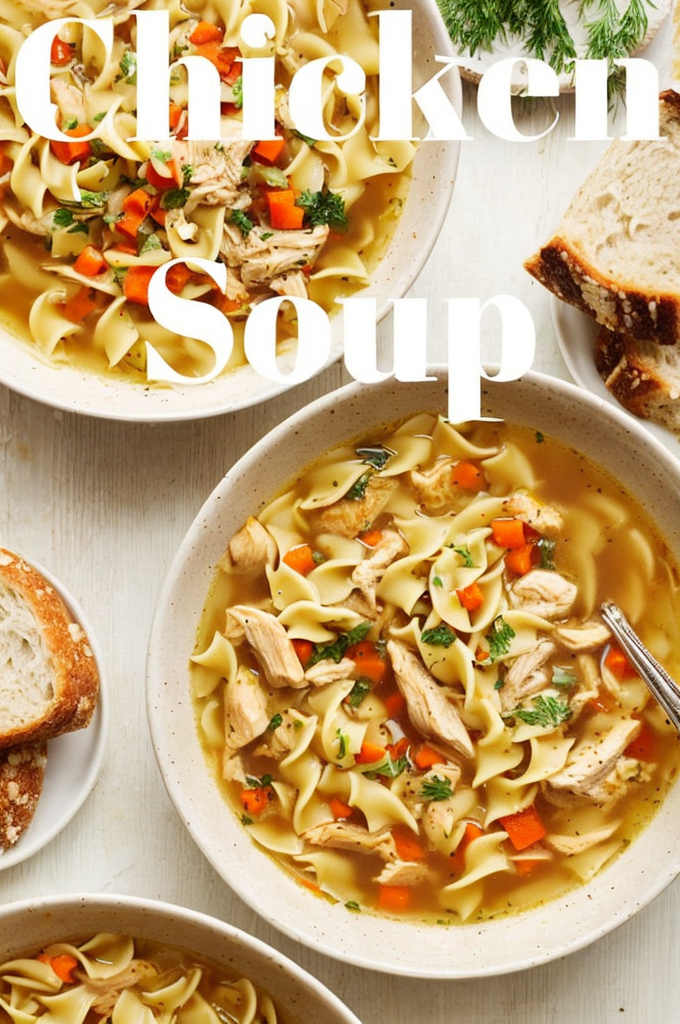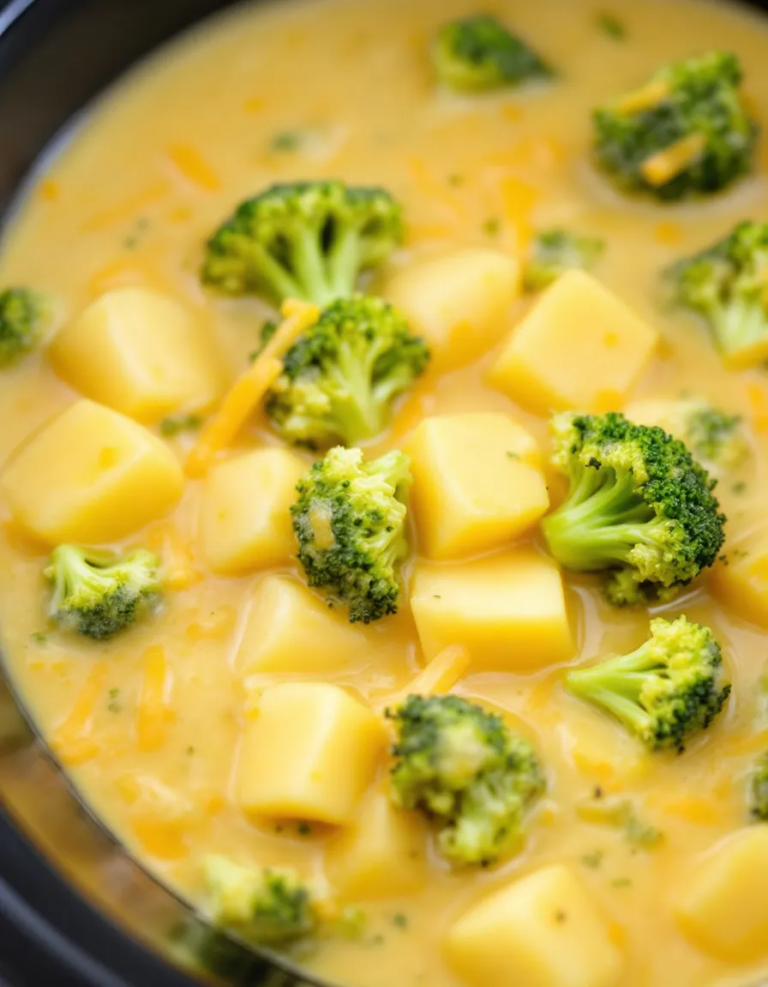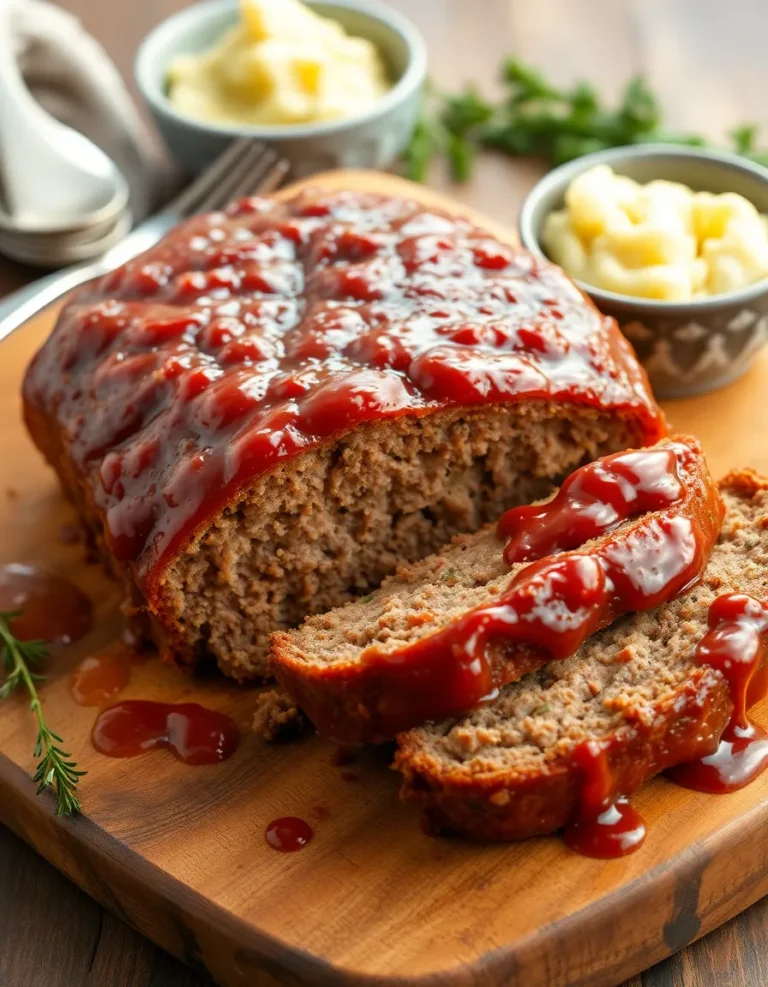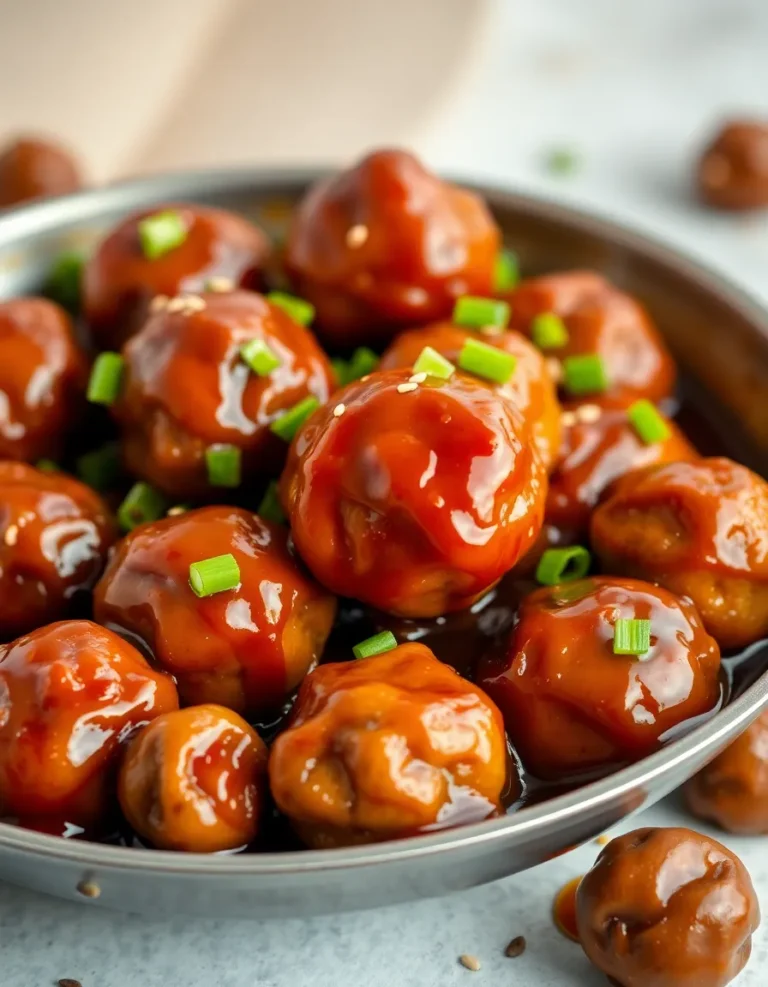Ultimate Flu Fighter Chicken Noodle Soup – Family Favorite
Ultimate Flu Fighter Chicken Noodle Soup – Family Favorite
Nothing soothes the soul like a comforting bowl of chicken noodle soup when those pesky cold and flu symptoms strike. Our Ultimate Flu Fighter Chicken Noodle Soup is a beloved family recipe that’s packed with hearty vegetables, tender chicken, and nourishing broth to help you feel better in no time. Whether you’re feeling under the weather or just craving a hot meal, this chicken noodle soup promises a taste of home with every spoonful.
The magic of this chicken noodle soup lies in its simple, wholesome ingredients that deliver big on flavor and nutrition. Imagine tender chicken swimming in a golden, savory broth, surrounded by vibrant vegetables and satisfying noodles. It’s not only a feast for your taste buds but also a nurturing balm for your body. Perfect for busy weekdays or leisurely weekends, this chicken noodle soup recipe is your go-to for a cozy, healing meal.
Quick Recipe Highlights
- Flavor Profile: The soup marries a robust chicken flavor with earthy vegetables and a savory broth, rounded off with a subtle hint of herbs for a complex and rich taste.
- Texture: The combination of tender chicken, soft noodles, and slightly crisp vegetables creates a delightful contrast that makes every bite interesting and fulfilling.
- Aroma: With aromatic notes of garlic, thyme, and freshly cooked chicken, the soup fills your kitchen with a tantalizing scent that signals comfort and warmth.
- Visual Appeal: A kaleidoscope of colors from carrots, celery, and parsley amidst a golden broth not only makes this dish visually appealing but also appetizing.
- Skill Level Needed: This recipe is perfect for cooks of all levels, with simple steps and common ingredients that make it a breeze to prepare.
- Special Equipment: You’ll only need a large pot or Dutch oven and a ladle to serve, making this recipe accessible and uncomplicated.
Recipe Overview
- Difficulty Level: This chicken noodle soup recipe is rated easy due to its straightforward preparation steps and readily available ingredients, making it ideal for beginners and seasoned cooks alike.
- Category: This dish falls under the category of comfort foods, offering warmth, nutrition, and satisfaction, especially when you’re feeling unwell.
- Cuisine: Rooted in American culinary traditions, this chicken noodle soup draws influence from old-fashioned recipes known for their simplicity and heartiness.
- Cost: Using basic pantry staples, lean chicken, and common vegetables, this soup is cost-effective, providing a budget-friendly, wholesome meal for the family.
- Season: Best enjoyed in colder months, this soup brings warmth and energy, though it can be savored all year-round for its soothing properties.
- Occasion: Perfect for casual family dinners, cozy weekends at home, or when you’re feeling under the weather and need a nourishing pick-me-up.
Why You’ll Love This Recipe
The Ultimate Flu Fighter Chicken Noodle Soup is loved for its comforting taste and healing properties. Each spoonful offers a warm embrace with its savory, rich broth that is both delectable and soothing. The taste is a perfect balance between the natural sweetness of the vegetables and the savory notes from tender chicken and herbs. The texture enhances the experience with soft noodles and crunchy vegetables providing an ideal contrast, giving it an appealing mouthfeel.
Preparation is a breeze, even on your busiest days. With a prep time of just 15 minutes, the soup allows you to enjoy maximum flavor with minimal effort. Simply chop your vegetables, simmer your chicken, and let your pot do the remaining work. This convenience ensures you have a hearty meal without hassle, especially when time seems to slip away or energy is low due to illness.
Nutritively, this chicken noodle soup is a powerhouse. It boasts a generous supply of vitamins from the vegetables and protein from the chicken, aiding in the quick recovery during flu season. The clear broth provides hydration, while the warm temperature of the soup acts as a natural decongestant. Each component works synergistically to bolster your body’s defenses and enhance overall wellness.
Socially, the soup serves as a comforting dish perfect for family gatherings or when hosting friends who appreciate homemade goodness. As you ladle out each serving, it creates a warm, inviting atmosphere that fosters togetherness and conversation. Its simplicity in preparation also makes it a great option for meal sharing or potlucks, where you can share your culinary love.
Lastly, the cost-effectiveness of this recipe ensures it’s suitable for any budget. Access to common, inexpensive ingredients enables you to stretch your meal planning without sacrificing flavor or nutrition. This accessibility is particularly valuable for ensuring everyone can enjoy a comforting, healthy soup without financial strain.
Historical Background and Cultural Significance
Chicken noodle soup has a rich history, tracing its origins back to various civilizations where it was revered as a healer’s potion. The combination of chicken and noodles first appeared in 12th-century China, drifting westwards and embedding itself into numerous European cuisines. It arrived in America as immigrants brought their culinary traditions, adapting the recipe to include local ingredients and spices, enriching its cultural mosaic.
In American culture, chicken noodle soup earned its reputation as “Jewish penicillin” due to its status as a staple in Jewish households and its perceived healing properties. It became synonymous with comfort and care, often served to nourish the unwell or uplift the spirit of those in need of emotional support. This cultural bond cemented its place as a beloved household remedy across diverse communities.
Over the centuries, chicken noodle soup has evolved significantly, with countless variations springing from regional influences and individual family traditions. Each culture adds its twist – from adding fresh herbs to including regional spices, the adaptability of the soup speaks to its universal appeal and functionality. Today, chicken noodle soup continues to be cherished not only for its flavors but its role as a therapeutic dish during cold and flu seasons.
Regional variations showcase cultural uniqueness, such as Poland’s rosół or Italy’s brodo, each with distinctive preparation methods and ingredients while maintaining the soup’s essence. These adaptations emphasize how chicken noodle soup, in its many iterations, remains a dish that unites people through shared experiences of comfort, nourishment, and tradition.
Ingredient Deep Dive
Every element of our Ultimate Flu Fighter Chicken Noodle Soup plays an essential role in creating a nourishing and flavorful dish. Let’s explore the main ingredients more closely:
Chicken forms the heart of this soup, a staple protein celebrated worldwide for its versatility. Historically revered as a tender yet robust meat, chicken has been at the center of many culinary traditions. Its role in this soup is dual-pronged, providing not only protein but enriching the broth with depth when simmered. Opt for skinless chicken breast or thigh for balanced flavors, ensuring to store any unused portions in a sealed container in the fridge for up to two days, or freeze for longer preservation.
Carrots lend natural sweetness and color, an ingredient with roots deep in early Persian agriculture. Packed with beta-carotene and fiber, carrots boost the soup’s nutrient profile. Choose ones that are firm and vibrant in color, indicating freshness. Their storage is best handled in your refrigerator’s vegetable drawer, wrapped in a damp paper towel inside a plastic bag to maintain crispness.
Celery, valued for its aromatic quality, brings both flavor and nutrition. Rich in vitamin K and fiber, celery complements the lightness of the soup with its subtle peppery taste. Crisp, bright green stalks indicate optimal freshness, which can be preserved by refrigeration in aluminum foil to prevent rapid dehydration.
Onions offer a savory foundation, a classic ingredient in culinary history treasured for its versatility and health benefits, including vitamin C and antioxidants. Select onions that are firm and free from blemishes, stored in a cool, dry place to avoid sprouting.
Substitutions in this recipe can accommodate dietary needs or personal preferences without losing integrity. For a meat-free variant, tofu or chickpeas are excellent alternatives, maintaining protein levels while diversifying texture.
Common Mistakes to Avoid
- Overcooking the noodles can result in a mushy texture. Cook them slightly under so they perfectly finish when reheated for serving.
- Using boneless, skinless chicken can lead to a less flavorful broth. Opt for bone-in chicken to enrich the soup base.
- Skipping the sauté step decreases flavor development. Ensure to sauté onions and garlic before adding broth for depth.
- Adding all vegetables at once risks uneven cooking. Stagger additions so softer vegetables, like peas, go in last.
- Forget to add seasoning incrementally through cooking. Season gradually to ensure balanced flavors.
- Neglecting to skim broth results in a cloudy soup. Skim impurities often for clarity.
- Using low-quality store-bought broth can affect the dish’s taste. Make homemade broth if possible for best results.
- Ignoring taste testing prevents adjustment of seasonings to preference. Taste regularly and adjust salt or herbs as needed.
Essential Techniques
Mastering key techniques elevates the quality of your chicken noodle soup:
Aromatics sauté forms the flavor base. By gently cooking onions, garlic, and celery in a bit of oil, you release essential oils and sugars that deepen the soup’s taste profile. Ensure the vegetables are translucent, not browned, to avoid bitterness.
Simmering rather than boiling preserves tenderness and flavor harmonics. A gentle heat allows flavors to meld without toughening the chicken. Keep the soup at a consistent simmer for optimal texture and richness.
Flavor layering through seasoning is crucial. Use fresh herbs like thyme and parsley during the cooking process to infuse subtle herbal notes that contribute to the soup’s aromatic appeal.
Visual cues for success are in the clarity, color, and scent of your broth. A clear, aromatic, golden broth signifies a well-balanced base, with flavors harmonized and ingredients perfectly cooked.
Pro Tips for Perfect Ultimate Flu Fighter Chicken Noodle Soup
Start with cold water when making homemade broth for optimum flavor extraction from chicken bones. The gradual rise in temperature draws out the impurities for a cleaner broth.
Enhance depth by adding a dash of soy sauce or fish sauce for umami. A small amount significantly boosts complexity without overpowering the soup’s core flavors.
Include a splash of lemon juice at the end of cooking for a bright, fresh finish that enlivens the flavors after simmering.
Use fresh herbs for garnishing to add color and herbal aromas, creating a more enticing and visually appealing presentation.
If storing leftovers, keep noodles separate from the soup to avoid them soaking up excess broth, preserving their texture.
When reheating, do so gently over medium heat to maintain the soup’s qualities without scalding or altering the flavor structure.
To thicken the broth naturally, mash a few pieces of cooked carrot and potato and stir back into the broth for a richer consistency.
Variations and Adaptations
Regional variations may include swapping traditional American noodles for Vietnamese pho noodles, Italian tortellini, or hearty German spaetzle, reflecting culinary influences while maintaining the soup’s comforting essence.
Embrace seasonal adaptations by incorporating available vegetables, like butternut squash in the fall or asparagus in spring, turning the soup into a celebration of the chosen season.
Dietary modifications are also straightforward. For a gluten-free version, utilize gluten-free pasta or rice noodles. Vegan options can replace chicken with tofu or jackfruit and use vegetable stock, providing a plant-based twist.
Flavor variations can introduce different herbs and spices. Consider rosemary for a woodsy note or turmeric for an exotic, vibrant flavor with added health benefits.
Texture modifications are achievable with cream for a creamier consistency or include orzo or barley for a chewier bite that transforms the soup into a more substantive meal.
Presentation alternatives like serving the soup in bread bowls offer a rustic touch, enhancing the sensory experience and adding an interactive dining element.
Serving and Presentation Guide
Enhance the appeal of your chicken noodle soup through careful presentation. Use wide, shallow bowls that show off the colorful medley inside, creating a feast for the eyes before taste.
Garnishing ideas include a sprig of fresh thyme, chopped parsley, or a sprinkle of black pepper on top for added color and aroma, inviting anticipation and enhancing freshness.
Traditional accompaniments like freshly baked rolls or crusty bread complement the meal, inviting diners to indulge in sopping up the delicious broth, completing the comfort food experience.
Modern serving suggestions may feature individual soup servings in mason jars for picnics or packed lunches, reflecting a trendy twist on this classic dish.
Temperature considerations play a role in serving satisfaction. Ensure the soup is warm but not piping hot to maintain flavor and provide immediate enjoyment.
Portion control tips highlight serving sizes that balance nutrition and satiety, offering approximately 1.5 cups per person, which ensures enough flavor without overwhelming or underfeeding diners.
Wine and Beverage Pairing
Wine pairings with chicken noodle soup should focus on complementary flavors without overpowering. A light-bodied white wine, such as Pinot Grigio or Sauvignon Blanc, provides a crisp, refreshing contrast to the savory broth.
Non-alcoholic alternatives like herbal tea or apple cider offer a soothing, aromatic accompaniment, enhancing the warm, healing properties of the soup while catering to all ages.
Coffee/tea pairings might include chamomile or peppermint tea, mirroring the calming nature of the meal and aiding in digestion and relaxation post-dining.
Temperature considerations ensure the beverages are not too hot to overshadow the soup’s warmth, maintaining a harmonious dining experience.
Serving suggestions involve using glassware that allows for aromas to be appreciated, enhancing the multisensory experience of the meal.
Storage and Shelf Life
Proper storage of your chicken noodle soup ensures safety and taste preservation. Once cooled, refrigerate the soup in an airtight container; it keeps for about 3 to 4 days without losing quality.
Adhere to temperature requirements by refrigerating promptly, within two hours of cooking. The ideal storage temperature is below 40°F (4°C) to prevent bacterial growth.
Container recommendations suggest using glass or BPA-free plastic containers with tight seals to preserve freshness and inhibit flavor absorption from stored surroundings.
Signs of spoilage include an off smell, cloudiness, and a sour taste. Discard any soup developing these signs to ensure health safety.
Reheating instructions advise warming the soup slowly on the stove over medium heat rather than in the microwave to prevent uneven heating and preserve textures.
Freezing guidelines suggest keeping the broth separate if making in bulk. Freeze in portion sizes for convenience, thawing overnight in the fridge before reheating.
Make Ahead Strategies
Effective make-ahead strategies simplify meal prep, ensuring fresh taste with minimal day-of effort. Prep all your ingredients in advance to streamline cooking times.
Store soup components, excluding noodles, separately in the fridge to maintain optimal texture. Prepare noodles fresh or reheat separately, adding to the soup just before serving.
Assess the quality impact of ahead preparation, tasting for fresh flavors without any nutrient loss, ensuring consistency in texture and taste during reheating.
Assembly tips for a smooth finish involve reheating the broth and vegetables first, then adding cooked chicken and noodles, allowing for even temperature distribution.
Reheating guidelines stress gentle warming over direct high heat to maintain flavor and prevent scorched or dry soup.
Add fresh elements like freshly chopped parsley just before serving to invigorate flavors, ensuring the dish tastes freshly prepared.
Scaling Instructions
Adjust your Ultimate Flu Fighter Chicken Noodle Soup to suit larger crowds or intimate settings. Halving the recipe is straightforward; simply cut ingredients proportionately, maintaining balance.
Doubling or tripling requires adjusting pot size, ensuring ingredients fit without compromising the soup’s consistency. A larger Dutch oven or slow cooker works best for bigger batches.
Equipment adjustments may include using a wider pot for increased surface area, which aids in even cooking during volume expansion.
Timing modifications involve proportional extensions to cook times, especially for chicken, while consistently monitoring texture and flavor development.
Storage considerations for larger batches are important. Divide into family-sized portions if freezing, ensuring maximum freshness and ease of access.
Nutritional Deep Dive
Explore the nutritional benefits offered by this comforting chicken noodle soup. Its macronutrient breakdown shows a balanced profile of proteins, carbohydrates, and fats, supplying sustained energy.
Micronutrient analysis reveals vital sources of vitamin A from carrots, vitamin C from celery, and protein from chicken, supporting overall health and immunity.
Health benefits are rooted in broth’s hydration properties, aiding in digestion and immunity. Lean protein supports muscle maintenance, while vegetables bolster immune defense.
Dietary considerations include swapping regular noodles for whole-grain or gluten-free options, increasing fiber content without compromising satisfaction.
Portion analysis helps manage dietary intake, with each serving offering balanced nutrition to meet daily recommended intakes without excess.
Weight management tips suggest using low-sodium broth and cutting back on noodles for those seeking a leaner version, emphasizing vegetable content.
Dietary Adaptations
The adaptability of this soup allows it to fit various dietary needs:
For a gluten-free version, substitute regular noodles with rice noodles or gluten-free pasta, ensuring safety for gluten-intolerant individuals.
For a dairy-free option, there’s no need to modify as this soup naturally excludes dairy while retaining creamy texture through natural broth thickness.
To make it vegan, replace chicken with chickpeas for plant-based protein, using vegetable broth to maintain depth of flavor, ensuring a wholesome alternative.
A low-carb variation could include shirataki noodles for fewer carbohydrates, suitable for those monitoring their sugar intake while enjoying fulfilling warmth.
Adapting for keto can involve using zoodles (zucchini noodles), keeping carbohydrates low, and tailoring the soup to fit ketogenic dietary goals.
For paleo followers, replace noodles with spiralized vegetables, staying true to paleo principles while savoring a nourishing bowl of soup.
Low-FODMAP adaptation requires eliminating garlic and onion, sticking to low-FODMAP approved vegetables like carrots and parsnips, for digestive comfort.
The Recipe
Ultimate Flu Fighter Chicken Noodle Soup
Serves: 6
Prep Time: 15 mins
Cook Time: 30 mins
Total Time: 45 mins
Kitchen Equipment Needed
- Large pot or Dutch oven
- Ladle
- Cutting board
- Knife
- Peeler
Ingredients
- 1 tablespoon olive oil
- 1 medium onion, diced
- 2 cloves garlic, minced
- 3 medium carrots, peeled and sliced
- 2 celery stalks, sliced
- 1 pound boneless, skinless chicken breasts
- 8 cups low-sodium chicken broth
- 2 cups egg noodles
- 1 teaspoon dried thyme
- Salt and pepper to taste
- Fresh parsley, chopped, for garnish
Directions
- Heat olive oil in a large pot over medium heat. Sauté diced onion and garlic until fragrant and translucent, about 3-5 minutes.
- Add sliced carrots and celery, cooking for an additional 3 minutes until they begin to soften.
- Place chicken breasts in the pot and pour in chicken broth. Add thyme, salt, and pepper. Bring to a boil, then reduce heat and simmer for 20 minutes.
- Remove chicken from the pot, shred using two forks, and return to the pot.
- Add egg noodles and simmer for another 5-7 minutes until noodles are tender.
- Adjust seasoning, garnish with fresh parsley, and serve warmly.
Recipe Notes
- Substitute egg noodles with any pasta of choice.
- For added richness, stir in a spoonful of butter before serving.
- Store leftovers in separate containers to maintain noodle texture.
Troubleshooting Guide
Should you encounter texture issues, ensure your noodles are not overcooked, pulling them when al dente and finishing them in the hot broth for ideal firmness.
For flavor balance difficulties, incrementally season throughout cooking rather than at the end to ensure gradual flavor layering, allowing time for adjustments.
Temperature problems can arise if reheating rapidly. Gently warm on medium-low to preserve original texture and avoid scorched flavors.
If equipment challenges occur, like overcrowding the pot, switch to a larger vessel to ensure even cooking and leave room for noodles to expand.
Ingredient substitutions impacting taste may need adjusting quantity accordingly, such as using bone-in chicken for more flavor if changing broth type.
Address timing concerns by prepping vegetables and chicken simultaneously to keep workflow efficient and match cooking times to ingredient needs.
Recipe Success Stories
Community feedback highlights the unifying nature of our Ultimate Flu Fighter Chicken Noodle Soup, with cooks sharing heartwarming anecdotes of healing and comfort provided to loved ones.
Variations have flourished, with readers adapting the soup to include regionally inspired spices and ingredients, expanding its global appeal while retaining its comforting essence.
Adaptation stories showcase individuals swapping noodles for zoodles, or incorporating other protein sources like turkey to create variations catering to dietary needs or personal preference.
Reader suggestions have enriched the recipe’s versatility and enjoyment, with many offering insight into their family’s unique tweaks, often involving additional vegetables or homemade stock.
Photography tips encourage capturing the soup in natural light, focusing on vibrant colors and texture contrasts to create appetizing visuals that invite viewers to taste vicariously.
Frequently Asked Questions
What should I do if my soup is too salty? Balance excess saltiness by adding more broth, water, or a touch of acidity like lemon juice to mellow the flavors.
Can I use pre-cooked chicken? Yes, incorporate pre-cooked chicken towards the end to warm through, preventing dryness and ensuring it remains tender.
How do I thicken my soup? Consider adding a cornstarch slurry or blending a small portion of the soup as a natural thickener, maintaining the creamy texture.
Is it okay to freeze with noodles? While possible, it’s generally not recommended as noodles can become mushy upon reheating. Freeze the broth and chicken separately for best results.
Can I make this soup in a slow cooker? Absolutely! Cook on low for 6-8 hours or high for 3-4 hours, adding noodles in the last 30 minutes of cooking for al dente texture.
What can replace celery? Substitute celery with leek or fennel for similar aromatic qualities, providing a subtle, flavorful undertone to the broth.
Should I peel carrots? Peeling is optional but can enhance the soup’s appearance and remove any bitterness, ensuring consistently sweet, smooth flavors.
Why is my broth cloudy? Cloudiness often results from boiling rather than simmering. Ensure to follow a gentle simmer and skim impurities as they rise.
How do I prevent mushy vegetables? Introduce vegetables in staggered additions, ensuring they remain slightly firm with a pleasant bite when the soup is served.
Can I use canned broth? Yes, but enhance flavors with additional fresh herbs and seasoning. Homemade broth often delivers superior taste and complexity.
Additional Resources
Explore these related recipes that align with seasonal ingredients and health-conscious cooking, offering flavors that complement the chicken noodle soul.
Consult our technique guides for mastering soup-making fundamentals, ensuring you bring out the best in every pot you create.
Gain more insight into ingredient choices, from seasonality to quality, with our comprehensive ingredient information resources, aiding smart purchasing and storage decisions.
Strong equipment recommendations ensure you have the right tools for each kitchen task, maximizing efficiency and consistency in your cooking endeavors.
Delve into seasonal variations, encouraging creativity in your kitchen by adapting beloved recipes to celebrate and savor the tastes each season brings.
Join the Conversation
Engage with us on social media for photography tips that highlight your culinary creations, showcasing beautifully plated soup that’s both artful and inviting.
Submit recipe reviews to share your experience and results, helping build community knowledge and inspire others with your interpretations and adaptations.
Join our community engagement forums for shared learning, recipe swaps, and to collect diverse perspectives enhancing your culinary repertoire.
Collaborate with fellow cooking enthusiasts to see how others diversify the recipe, drawing inspiration from regional and cultural influences globally.
Share recipe variations with our audience, celebrating the ubiquitous joy that chicken noodle soup brings to tables worldwide, reflecting personalization and tradition.






